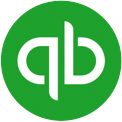How to Build a Brand
After finding what your exact ‘why’ is and your brand’s purpose, now is the time to share that information with the world. Summarize that ‘why’ into one sentence, write it down on a piece of paper, and make sure everyone in the company understands your mission statement.
This ‘why’ will now become the thing that drives your organization and everything you do as a brand identity. You can even put your ‘why’ sentence up in your office or store to ensure no one ever forgets it.
These ‘whys’ are considered the brand purpose or brand vision/ brand mission.
For example, the successful brand, Nike, does not just sell sportswear. The brand actively works within communities to promote healthy living. They even participate in political movements, such as Black Lives Matter.
It is the why that illustrates why your products or services matter to your customers and the differences they make in their lives. It is the reason that will increase brand awareness and help you build a strong brand personality.
Using this why there are seven main ways to brand your business and build atop the foundation you have just created for your brand recognition.
A successful brand needs sacrifice
According to Al Jack Trout’s early modern book on marketing, ‘Positioning,’ he asserts that a business’ position in the marketplace necessitates sacrifice. It is a critical rule in building a brand- your business has to stand for something, and in doing so, it means not standing for other things.
Do not try and create a brand that does everything, it won't work. Instead, you have to choose one thing. By positioning yourself in this way, you have to sacrifice something. Therefore:
- Focus the brand purpose on something specific
- Don’t do everything, do a great job of standing for one thing
For example, when Starbucks or Tim Hortons lost market shares, it was when they were trying to do too many things at once that they ended up meaning less to everyone. If this happens, it allows for the competition to creep in.
Distinct not different
The main point of your brand doesn’t have to be something unique to you or your company- think distinct and not different. The why of the brand does not have to be unique to you - you don't have to be different from competitors with this- you just need to be distinct.
Distinct can be a quality of your own that you want to highlight. You can put what you want to distinguish your brand front and centre. The focus would be the distinct benefit to the customer. How you talk about the things you choose as a point of distinction can matter more to your brand than your own product or service.
Use the right tools
The right tools can help you develop your ideas and get them out there to the public. Such tools can also help you research your brand and message and how others will perceive the brand.
One essential tool that can help you hammer out your brand message is to try customer interviews. If the business has stakeholders, stakeholder interviews are also a good idea. These interviews should:
- Focus on the successes of the brand - not about customer service but what you could and should be doing better
- Find your best attributes to build your brand around
- Find out how you matter to them the most and what they’ve gotten the most benefit out of your product or service
- Determine why they keep coming back to your business
- Be prepared for honest answers
Pick a channel or two
Next, decide on one or two online channels to start your social media marketing and distribute your brand’s message. You do not need to be everywhere at once. Starting with just a few social channels to focus your efforts on is better than spreading yourself too thin on multiple platforms at once.
To decide what social media networks to use, choose ones that work for you and your why. Next, consider what platforms your target audience and current customer base use, and go there. This is where previous research and interviews come in handy, as it should illustrate where your target customer base goes online. Once identified, you can begin to make a social campaign that works with your brand’s mission.
Create customer personas
Part of establishing your business’ marketing plan will have you creating buyer personas for your ideal target market. Modelling customer personas after your target market will help you determine how your business’ why will resonate with the target customers you hope to entice to buy your product or service.
The point of these marketing materials and customer personas is to create realistic portrayals of your business’ ideal audience as a means to identify what drives them to buy your product, or what connects them to your business’ why. You will want to identify the wants and needs of each of your customer personas to help you in this matter.
Competitive research
Competitor research is an essential part of your business’ market research phase. To research competitor brands, you should first take note of your company’s main competitors, and the biggest players in your industry. Deep dive into each of their websites to determine their branding techniques, mission statements, landing pages, blog content, and social media posts.
What is each competitor’s brand positioning? See if you can identify each competitor’s why and how they portray their mission statement on their site. Looking at other companies’ branding process will help you with your own. Be thorough in your investigation and take notes on what competitors did right and where they went wrong so you can take advantage of that gap in their site or content.
Establish a brand identity and consistent look
Establishing a strong brand identity is also about brand consistency. Just as you need to keep consistent brand guidelines, you’ll need to create consistency with a unique colour and logo combination used throughout your marketing campaigns and business documents.
These are known as brand assets and are essentially the business’ visual identity. Once you have settled on a memorable logo and colour scheme, keep templates and use them on all of your business documents.
For example, using QuickBooks’ invoicing feature, you can easily create professional and highly customizable documents, allowing you to brand your business invoices and save them as templates. Modify colours, add a brand logo, change up the font- customize your professional documents to whatever suits your business brand best.





